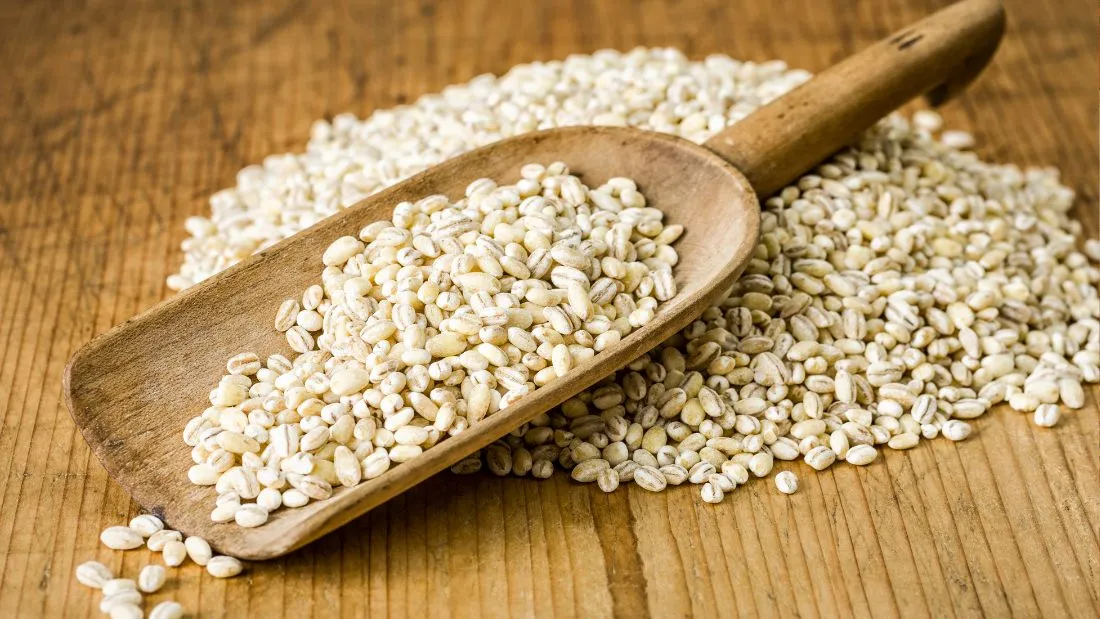Barley

Barley nutrition
Barley has been used in many traditional soup and stew recipes for centuries. It is fairly drought-resistant but it doesn’t tolerate low temperatures as well as rye or wheat. Nowadays, it is grown mainly for malt for brewing beer and whiskey and for animal feed but there’s also enough left to be sold as grains for cooking.
Barley with only the husk removed is called hulled barley (or pot barley or scotch barley) and is more nutritious than pearl barley, which has had its husk removed and has undergone polishing to remove more of the bran, leaving a less nutritious grain. However, pearl barley is widely available and faster to cook than hulled barley, which is sold only in some shops and online.
Half a cup of cooked pearl barley contains three grams of protein, over four grams of fibre, small amounts of B vitamins and some important minerals, such as magnesium, iron, selenium and zinc. Hulled barley contains slightly more of these nutrients. The protein in barley includes gluten, which makes it an unsuitable grain for people with gluten-related disorders but it’s a healthy food for everyone else.
Interestingly, barley has the lowest glycaemic index of all grains so it provides long-lasting energy and doesn’t cause blood sugar highs and lows. That’s why is also suitable for diabetics.
Barley health effects
Barley is a great addition to your diet not just because it supplies important nutrients but it offers other health benefits too. The main type of fibre in barley is beta-glucan, which is also found in oats, and it may help lower cholesterol and improves blood sugar control. On top of that, barley contains antioxidants, which help protect your cells and blood vessels from damage caused by oxidative stress.
Just as with rye and other wholegrains, barley has a positive impact on your digestive health and promotes the growth of good bacteria within your gut. That, in turn, reduces your risk of bowel cancer and inflammatory diseases.
Barley contains choline and a compound called betaine, which the body also converts to choline, an essential nutrient that plays a role in healthy sleep, learning, memory, nerve signal transmission and muscle function. What’s more, it helps maintain your cell membranes and aids in the absorption of fat. Both barley and rye contain more of these two compounds than wheat.
How to use barley
Barley can be used instead of rice as a side dish or as a basic ingredient for barley risotto – which is perfect with mushrooms. Using barley in place of rice is also more environmentally friendly.
Another way to use barley is in hearty soups and stews of any kind – it adds substance, texture and nutrients!




